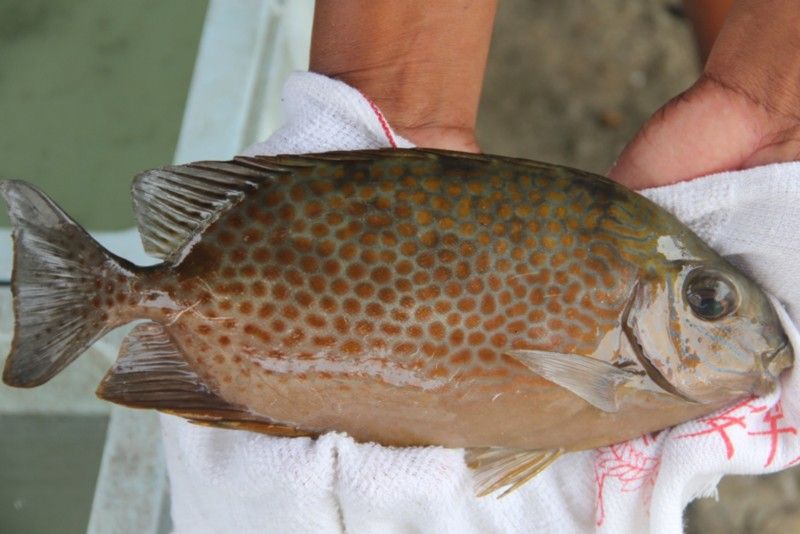BFAR team makes global headlines in fish culturing

MANILA, Philippines — Globally, the culture of carnivorous marine finfish and crustaceans receives the most interest from constitutional investors, with species groups like sea bass, salmon and shrimp showing double-digit growth rates.
These species are enjoying high demand from western and Chinese customers and fetch relatively high prices. Their culture, however, comes with high environmental impacts.
Large amounts of fishmeal are typically required as feeds, and it is estimated that at present, a quarter of all fish landed globally – a whopping 21 million tons annually – are caught for the fishmeal industry.
With the planet facing a global environmental crisis, improving the sustainability of farming methods is critical.
Aside from lower environmental footprints, culturing marine herbivores is crucial for ensuring food security in developing countries surrounded by vast amounts of seawater like Indonesia, Bangladesh and the Philippines.
In the Philippines, an island-nation of over 7,000 islands, finfish play an important role in the daily diet of people living in rural communities. With a population exceeding 100 million people, large amounts of fish must be produced.
Since the Philippines has limited freshwater resources but nigh-endless coastal marine areas, the country’s Bureau of Fisheries and Aquatic Resources (BFAR) has for years been wisely focusing on promoting the culture of marine herbivores. Their main focal point has been the culture of milkfish, with the Philippines now producing around 400,000 tons annually, making it the country’s top aquaculture species in terms of volume.
Westly Rosario, who leads BFAR’s aquaculture research station in the province of Dagupan, is one of the scientists behind the successful culture of milkfish. In recent years however, he and his team also saw the need to diversify the country’s aquaculture sector.
For the past years, they have been putting a lot of effort in the culture of rabbitfish. Actually, it was his father who first experimented with and saw the potential of these fish.
Rabbitfish are medium-sized herbivorous fish native to the Indo-Pacific region, thriving in coastal areas. Some species prefer brackish-water mangrove habitats while others live in and around coral reefs.
Locally known as danggit and samaral, these fish are very popular and sought-after. “The Philippines is the top producer of wild-caught and cultured rabbitfish with annual landings of around 30,000 metric tons,” Westly said.
“The demand for export within Southeast Asia and other markets like Hawaii is very high. However, few Filipinos are raising rabbitfish due to the low supply of fingerlings and un-disseminated technology. Their popularity as food fish is leading to the decline of their numbers in the wild,” he said.
About 10 years ago, Westly and his team started working to close the lifecycle of these fish in captivity. Eight years ago, they successfully cultured two of the most commercially-interesting candidates, the golden rabbitfish and the maze rabbitfish for the first time.
Both species are popular food fish, growing to about 50 centimeters with a maximum weight of one kilogram for the first and two kilos for the latter. Fresh fish fetch around P325/kg farm gate and P380/kilo retail, which in comparison is almost double the price of milkfish.
Their experimental hatchery is now achieving very reasonable survival rates of five percent from larvae to fry sizes in 45 days. The fry are stocked in nursery ponds and reach fingerling size in about 90 days.
Fingerlings can then be further cultured in brackish-water ponds, pens or floating sea cages. In lower densities, the fish can be fed with filamentous algae, seaweed and sea grass which grow luxuriously in brackish-water ponds.
However for large culture volumes, a local plant-based pellet feed that ensures good growth and survival rates, has already been released by local feed producer Tateh Feeds. Fish can be harvested at 250 grams within five or six months of culture from fingerling size.
Rabbitfish are also ideal candidates for polyculture systems as they are non-aggressive and feed mostly on filamentous algae and other vegetation. In the Philippines, they are already co-cultured with both milkfish and shrimp. They have also been experimentally co-cultured with grouper, with small numbers of rabbitfish added to grouper cages to keep the floating nets relatively free of algae and seaweeds.
To further improve growth and survival rates, Westly explained how he came up with the idea of developing a hybrid between the golden rabbitfish and the Maze Rabbitfish.
The findings on lunar cycles will enable rabbitfish hatcheries to maximize production year-round. These hybrids should grow better than the parent species because of hybrid vigor and show stronger disease resistance while fetching the same price in fresh fish markets.
Despite the strong foundations laid down by Westly and his team, the Philippines was still producing a paltry 303 tons of rabbitfish through aquaculture last year. However, this is almost 90 percent of global production. This represents an increase of 56 percent from the 194 tons produced in the country in 2017.– Jonah van Beijnen, Gregg Yan
- Latest

























